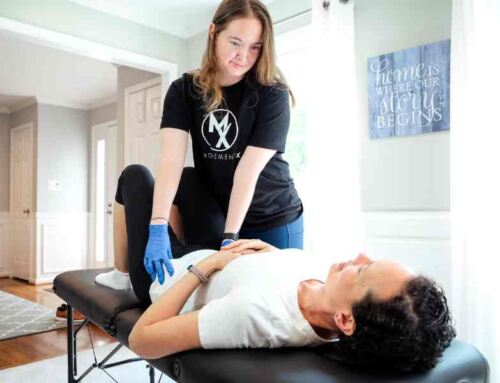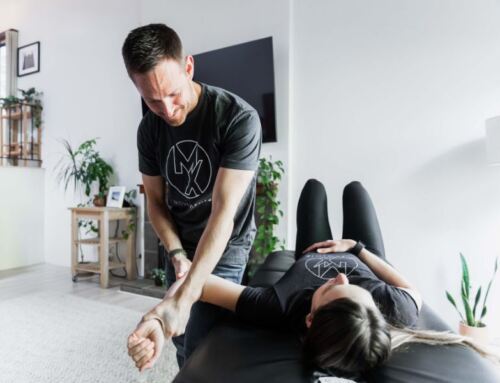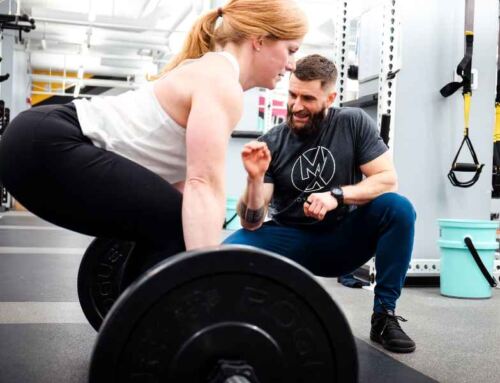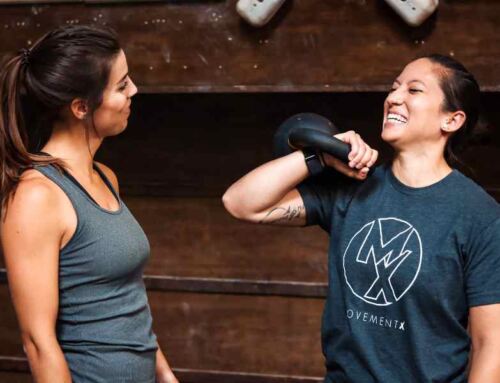Tend Your Body Like a Garden: Restoring Movement with Care
Does your body feel stiff and achy more lately? Perhaps you’ve tried some yoga, massage, or stretching but the tightness seems to come right back? Maybe you’ve grown accustomed to this as your “new normal” or thought: “I guess I’ll have to live with this”. But here’s the good news–you don’t have to settle for a stiff, achy body. You can take control of your health and get back to moving freely again!
This article reveals a fresh approach to self-care, easy habits for busy days, and how partnering with a dedicated Doctor of Physical Therapy can improve your quality of life.
Why Is My Body So Stiff & Achy?
There are many reasons why our bodies grow stiff and achy over time. Most commonly, it is because we aren’t moving our bodies enough throughout the day.
- Maybe you’re a busy parent taking care of your kids with little time to set aside for yourself to exercise.
- Maybe your job is extremely busy with tons of emails to answer and video calls to attend each day and little time to move your body.
- Or perhaps you enjoy long stretches of TV or computer time to watch news, sports, or to binge the latest show.
On average, Americans spend 6.5-8 hours in a sitting position which can cause certain muscles to become tight, while other muscles become underused (Berninger et al., 2020). This leads to muscle imbalances in the body which can cause stiffness, aching, pain, and in some cases lead to nerve irritation or joint compression. The great news is you can reverse this by adopting new habits and optimizing the way you move your body.
Your Body Is Like a Garden
Think of your body as a garden. When you’re born, you’re gifted with fresh soil, seeds, sunlight, and a consistent water source. Your garden is full of healthy flowers, veggies, and fruits. A tall, deep-rooted sunflower stands proudly at the center.
The Young Garden
When your garden is young it grows rapidly; resilient against weeds, bugs, and the elements. The tulips, tomatoes, and peas flourish effortlessly, needling little attention or care. Life is good for the young garden!

The Untended Garden
As the garden matures, it has great potential to yield a plentiful harvest. But if left neglected, it will be more likely to become overgrown and less likely to reach its full potential.
As time passes, thick weeds invade your garden. Ivy overtakes your tomatoes and tulips and begins to constrict around the stock of your sunflower. Bugs start to chew away at your leaves, and the animals start to discover the delicious fruits and veggies they can eat.
So… what do you do if this happens to your garden?
Any experienced gardener will tell you:
- Seek advice from the experts.
- Get the right tools.
- Set aside time to regularly tend to your garden.
You look up the best nursery in your area to ask for help, attend an in-person workshop, buy some gardening tools, and set aside some quality time to get to work. At first it will take extra time and effort. You may get frustrated or discouraged by the lack of results. Consistency is key to reclaiming a healthy and thriving garden.
The Untended Body
This metaphor of the overgrown garden is figuratively (yet sometimes quite literally) what can happen to our body if left untended for too long.
Stiffness invades our joints and tightness constricts our muscles. Just like the novice gardener, if you don’t actively seek knowledge and dedicate time to address these changes, your body may not thrive.
But just as a garden can be restored, your body can recover too! Any movement veteran will tell you:
- Seek guidance from a Doctor of Physical Therapy
- Get the right tools – exercises and stretches to address your specific needs
- Set aside regular time to move and strengthen your body
Sound familiar?
You get on a free phone call with your local MovementX provider to discuss your problem, attend an in-person assessment, get some exercises and tools, and set aside some quality time to do the work.
Your MovementX physical therapist is there to walk you through the process. They provide you with education about your body, coordinate with your entire care team to get you what you need, and ensure that you have a path towards progress at each step in the process.

The Well Tended Garden & Body
After several weeks of tending to your garden, the weeds are gone and the plants are thriving again! Similarly, after just a few weeks of healthy movement, specific stretches, and a personalized strengthening routine, your body will start to feel better too.
These first 4-6 weeks of new habits are the most critical periods to make lasting changes. This is typically when your physical therapist will need to see you the most consistently (usually 1-2x/week). This is because your muscles and joints need to be constantly reminded of what changes you’re trying to make, otherwise they revert back to their more familiar patterns.
Overcoming Setbacks
Just when your garden is flourishing, a heavy rainstorm might come and wash away some of your progress.
Disappointing? Absolutely. Frustrating? Of course! Starting over? Definitely not.
You have the tools, guidance, and habits you need to get your garden right back on track with less confusion and effort!
The same goes for your body. Setbacks happen but with the support of your MovementX Doctor of Physical Therapy, you’ll learn to manage these challenges and stay on course. In my experience, some of the greatest breakthroughs follow a setback!
Long-Term Success
After several months of deliberate changes to your body and the way you move, you now appreciate the new habits and tools you’ll need to use to keep your body healthy. You find yourself able to adequately manage your aches and pain and are feeling your body is stronger and more resilient now than ever.
Even if you encounter life’s inevitable periods of sickness or injury your consistent investment in your body will maximize your recovery process and give you the tools to return to your previous lifestyle and achieve your goals.
What Can I Do To Start Tending To My Body?
The best part is, you don’t have to spend a dime to make meaningful changes! The key is to start building habits in your day to move. To do this, you can:
- Set reminders: If you sit or stand for long period, set timers or schedule breaks to move every hour
- Listen to your smartwatch when it tells you to move
Here are a few quick movements you can do. Chose 1 each hour during your day:
- Squat taps to your chair 10 times
- March in place 100 times
- Go up/down a flight of stairs 1-2 times
- Do 15 standing heel raises
- Do 10 push ups (easy: wall, medium: counter, or hard: floor)
While simple, these movements get blood pumping through your body and brain, loosening up your muscles to feel more energized to return to work.
Additionally, there are specific desk exercises you can perform sitting or standing at your workstation! Stay tuned for future blog posts containing more simple exercises.

We’re Here To Help You Move Better
As a Doctor of Physical Therapy, it’s my goal for everyone to learn how to move so we can reach our full potential in whatever we love to do. Movement is so essential to interacting with the world and those around us, and I have experienced first hand how powerful it is to learn how your body works and how to take care of it without being dependent on powerful medications, specific treatments, or expensive equipment.
At MovementX, I have the time and resources to provide you with a uniquely tailored assessment, develop the right combination of exercises and movement modifications, and help you become fully independent so you can understand your body for years after you’ve finished working with me. One of my favorite phrases about PT is:
“PTs are ultimately trying to work their way out of a job with you”.
Once you’re feeling better, moving better, and living better you will be encouraged to use the skills you’ve developed to take care of your body on your own. Rest assured, your MovementX DPT will always be a text or a phone call away if you need any guidance or assistance!
I encourage you to reach out to me via text, email, or phone call to set up a free phone consultation so you can share your story and we can develop a plan to get you better. Even if that plan doesn’t include booking sessions with me, I am still available to you as a resource and can point you in the right direction!
If you or someone you know may benefit from learning how to tend to their body and regain their ability to move freely again, please share this article with them and encourage them to contact me!
References
- Berninger NM, Ten Hoor GA, Plasqui G, Kok G, Peters GY, Ruiter RAC. Sedentary Work in Desk-Dominated Environments: A Data-Driven Intervention Using Intervention Mapping. JMIR Form Res. 2020 Jul 20;4(7):e14951. doi: 10.2196/14951. PMID: 32706695; PMCID: PMC7399954.
- Daneshmandi H, Choobineh A, Ghaem H, Karimi M. Adverse Effects of Prolonged Sitting Behavior on the General Health of Office Workers. J Lifestyle Med. 2017 Jul;7(2):69-75. doi: 10.15280/jlm.2017.7.2.69. Epub 2017 Jul 31. PMID: 29026727; PMCID: PMC5618737.
- Hwang CL, Chen SH, Chou CH, Grigoriadis G, Liao TC, Fancher IS, Arena R, Phillips SA. The physiological benefits of sitting less and moving more: Opportunities for future research. Prog Cardiovasc Dis. 2022 Jul-Aug;73:61-66. doi: 10.1016/j.pcad.2020.12.010. Epub 2021 Jan 13. PMID: 33453285; PMCID: PMC8628304.
- Martinez VML. The importance of workplace exercise. Rev Bras Med Trab. 2021 Dec 30;19(4):523-528. doi: 10.47626/1679-4435-2021-666. PMID: 35733538; PMCID: PMC9162294.
- Pronk NP, Katz AS, Lowry M, Payfer JR. Reducing Occupational Sitting Time and Improving Worker Health: The Take-a-Stand Project, 2011. Prev Chronic Dis 2012;9:110323. DOI: http://dx.doi.org/10.5888.pcd9.110323 .
- Whitsel L, Ablah E, Richards T. Editors’ Desk – Creating a Movement for Healthy Physical Activity at Work. Am J Health Promot. 2023 Jun;37(5):722-723. doi: 10.1177/08901171231172013. PMID: 37269240; PMCID: PMC10281907.







